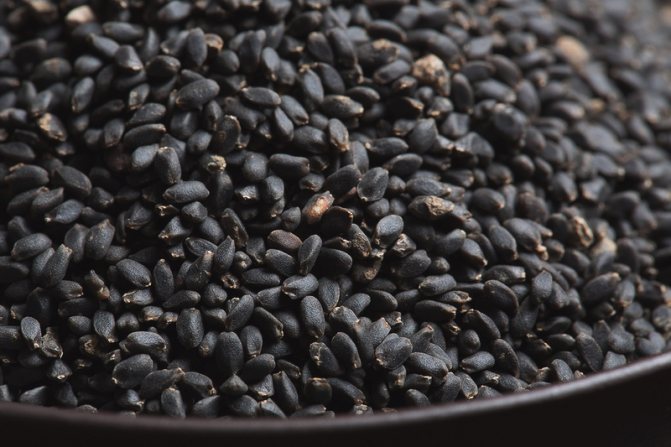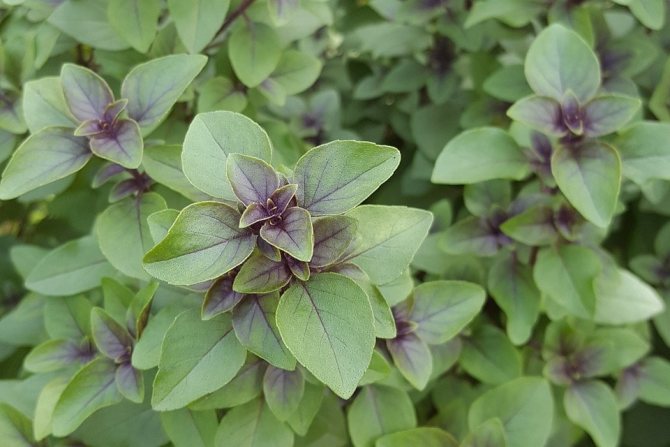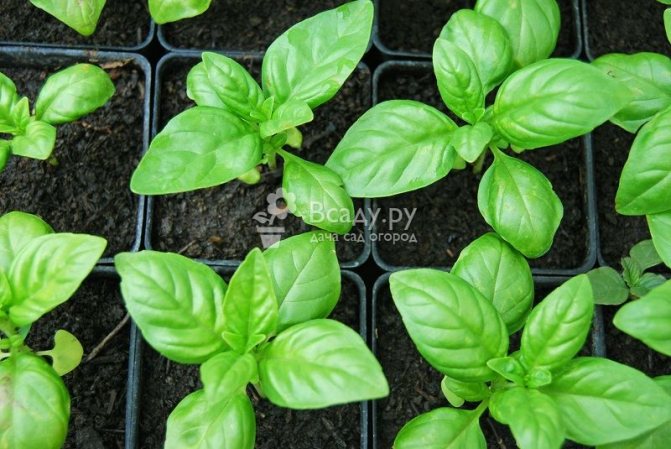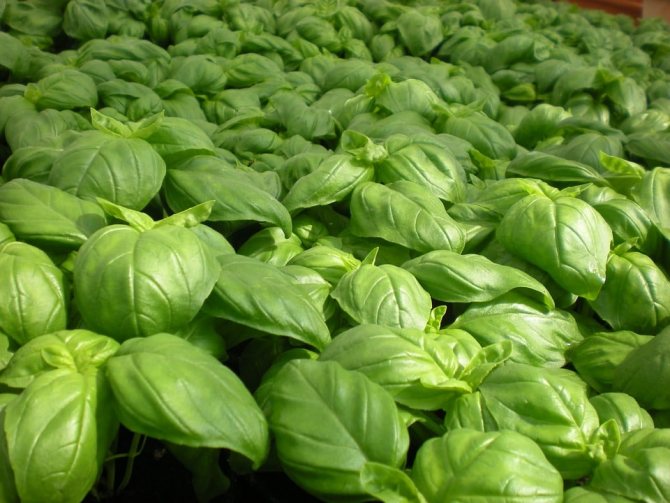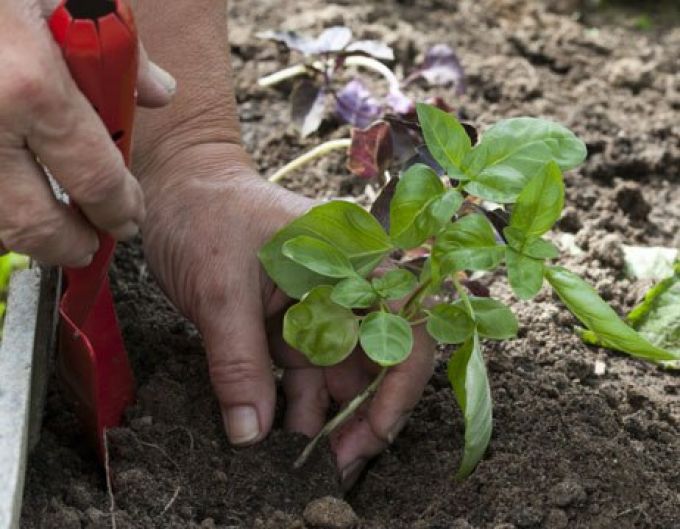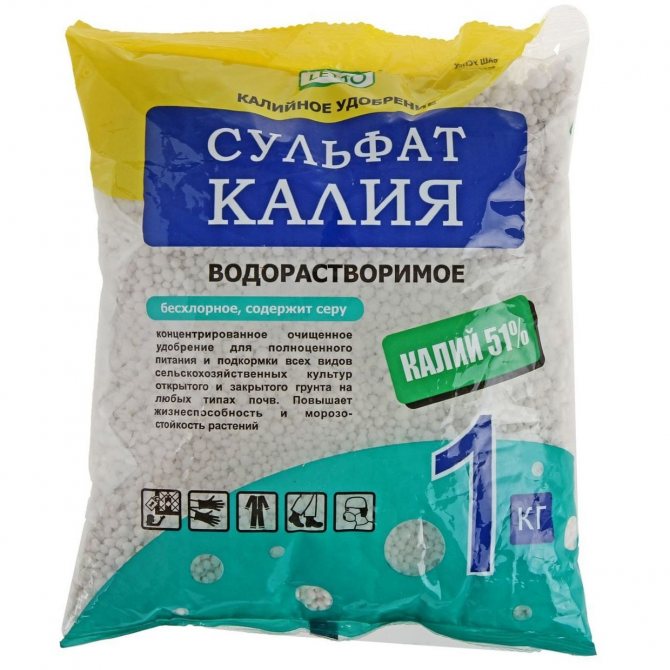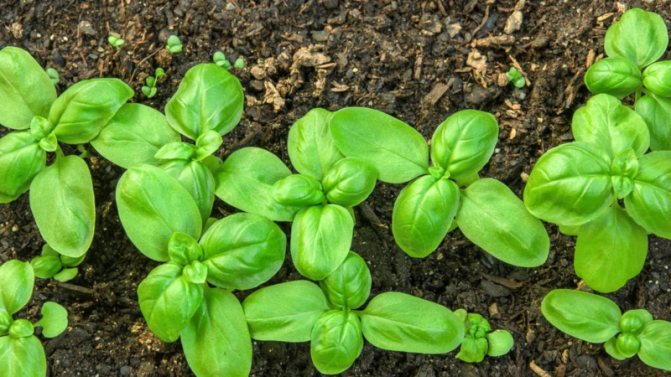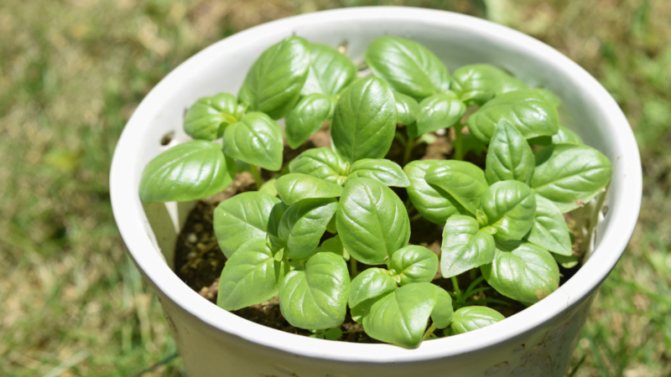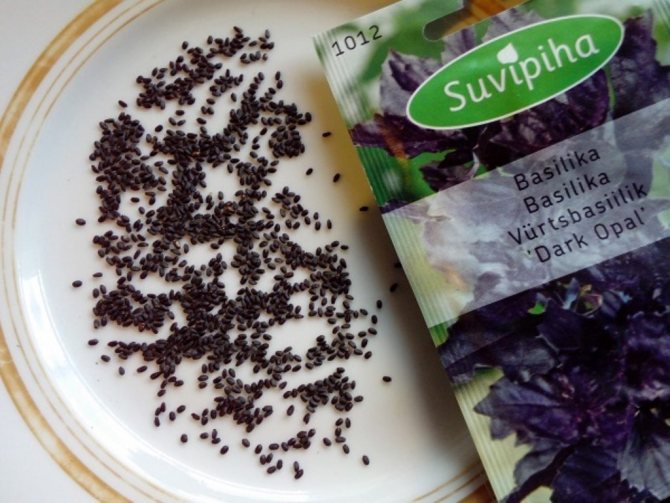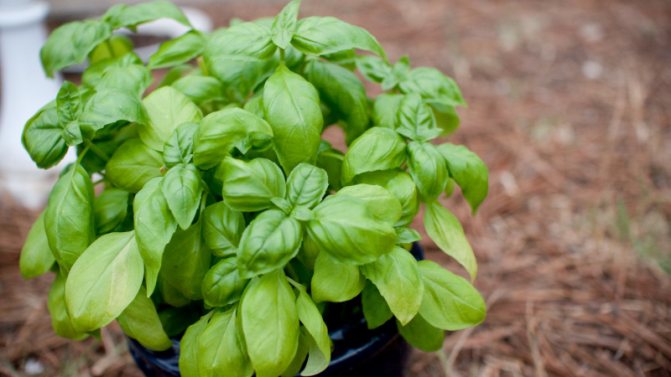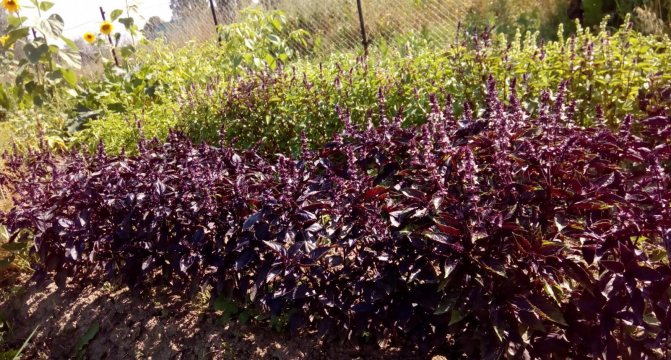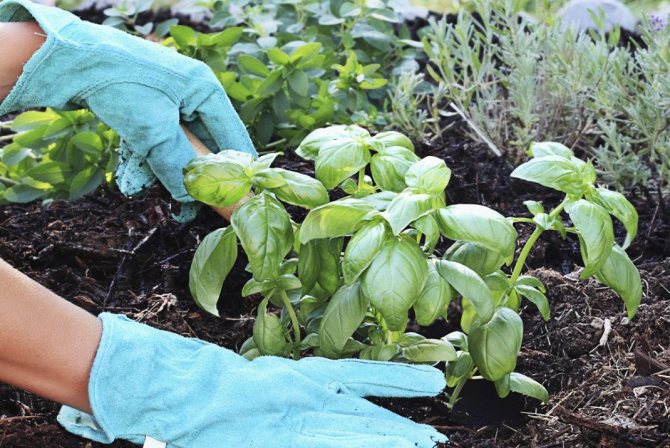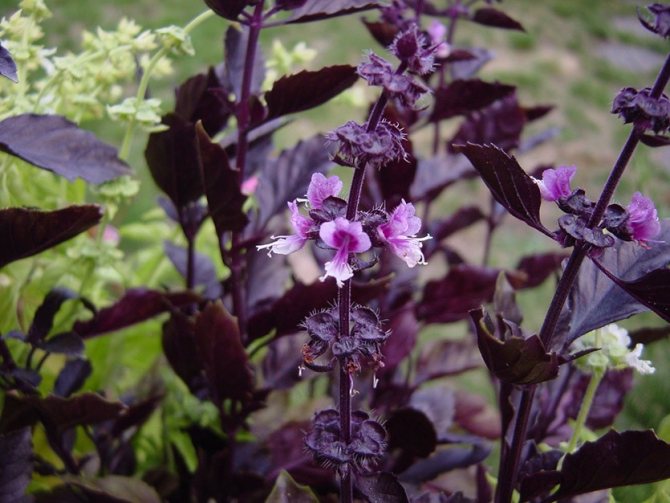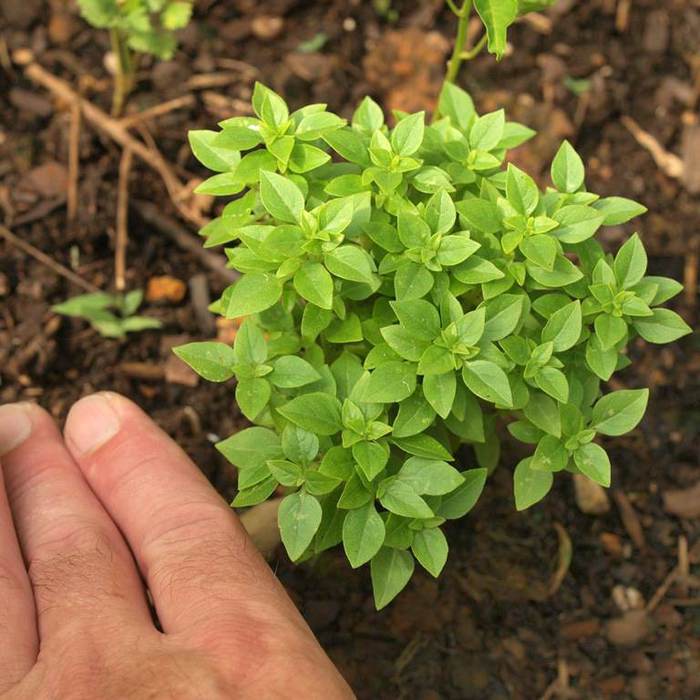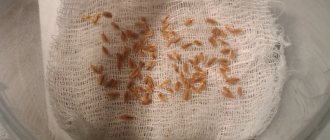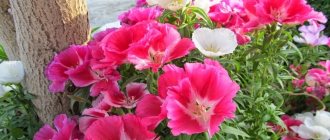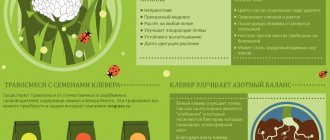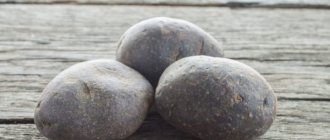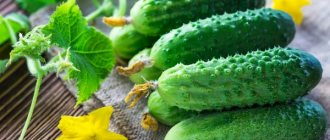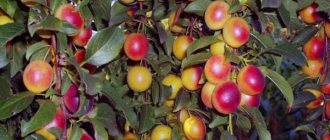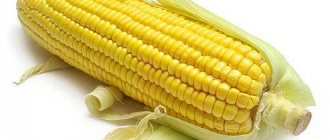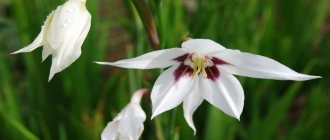Let's take a look at what basil is like. Growing from seeds, caring for it will not add special difficulties to the gardener. Many people like basil for its special taste, aroma, and beneficial properties. It is a lush, medium-sized bush, about 60-80 cm tall, is often used not only for cooking, but also as a decorative decoration of the site.
Aromatic spices such as fennel, rosemary, thyme, tarragon, cilantro, basil are popular with many, therefore they have been successfully grown in our gardens for a long time.

Green and purple basil in the garden
When to plant basil seedlings
This is a thermophilic culture. She does not like cold temperatures at all, let alone frost. It is best to grow it through seedlings. However, in the southern regions, seeds can be sown directly into the ground when a warm above-zero temperature is established. Of course, you can sow crop seeds in open ground and in other regions, only in this case, sow seeds late May - early June. You will get magnificent bushes of greenery, but the seeds, unfortunately, will not have time to ripen.
To calculate when to plant a plant for seedlings, take into account the variety of basil and the climate in your region. On average, seedlings are planted in the ground when they are 45-60 days old. Gardeners often argue over how much basil rises. The term, first of all, depends on the temperature. The warmer it is, the faster the seedlings appear. And you will get an early harvest.
On average, seeds germinate in about 10-14 days. Total, you need to sow in 55-75 days before the intended disembarkation.
If you have a steady heat in early June, sow basil late March - early April.
Advice! If you adhere to the lunar calendar, know that it is advisable to sow this plant on the growing moon when the Earth's satellite is in Cancer, Scorpio or Capricorn.
Watch the video for an interesting way of planting seeds:
Basil purple: diseases and pests
Important: Basil is a disease-resistant plant. But if the growing conditions are not met, the plant is affected by fungal diseases.
Knowing the causes of diseases and pests of basil, you can prevent damage to plants.
Basil violet diseases:
- Blackleg - damage to the root collar and stem of the plant by the fungus. It is not difficult to determine this disease, the stem becomes dark, and the leaves are depleted. Abundant watering, poor drainage, poor aeration and increased acidity of the soil lead to the defeat of the "black leg".
- Gray rot - a fungal disease that mainly affects basil in a greenhouse, a greenhouse. This type of fungus is present in the soil, but actively begins to multiply due to an excess of moisture in the air. As a result of high temperature and moisture droplets are formed on the leaves, which lead to the death of the leaves. First, gray dry spots appear on the leaves, then they become watery, fluff appears. The fungus spreads to all parts of the plant and leads to death.
- Fusarium - characterized by wilting of the plant. On young plants, the disease is manifested by the depletion of the stem, the color becomes brown. Adult plants begin to die from the top, it dries out. Fusarium infects seeds and can be found in the soil. For prevention, it is recommended to regularly alternate the planting site of the basil.
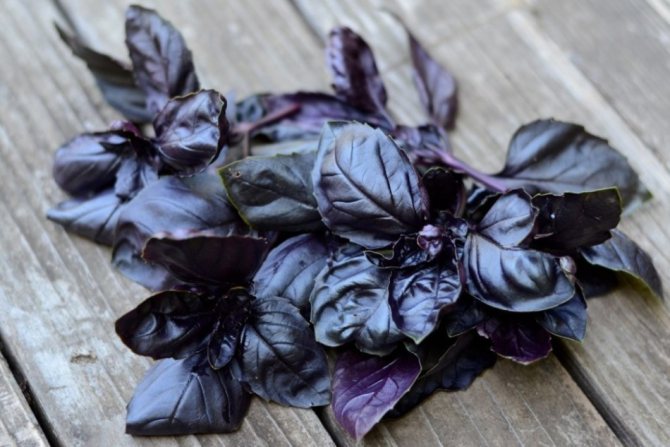

Basil diseases
Basil is practically not disturbed by pests. Moreover, this plant serves to repel various pests, such as: aphids, spider mites, field bugs. Sometimes the plant infects the Japanese beetle. The pest can be removed manually by collecting the insect.
The best prevention of diseases is disinfection of the soil before planting, proper watering, and sufficient air in the greenhouse. In the early stages of a fungal disease, spraying with onion peel infusion helps. It is important to get rid of diseased plants in order not to expose other basil bushes to disease.
How to sow seeds for seedlings
If you are thinking about how to plant basil seedlings, follow our description. The steps are simple.
- First of all, prepare the ground. Be sure to remember that it must be loose and breathable. Moreover, it must be nutritious. You can make the following mixture: take humus or rotted compost, peat and sand in a ratio of 2: 4: 1.
The mixture can be pre-disinfected - spilled with a strong solution of potassium permanganate. Recently, organic preparations have become popular. They can also spill soil.
- Prepare the container. Experienced gardeners, as a rule, sow each variety in different containers - this is more convenient. You can take boxes, peat pots, special cassettes, seedling cups. Pour earth into the container. Tamp down lightly.
- Plant seeds can also be disinfected before planting - soak them for several hours in a weak solution of potassium permanganate. Or pre-hold in a humid environment to simply speed up the sunrise process. But you can just sow it in the ground.
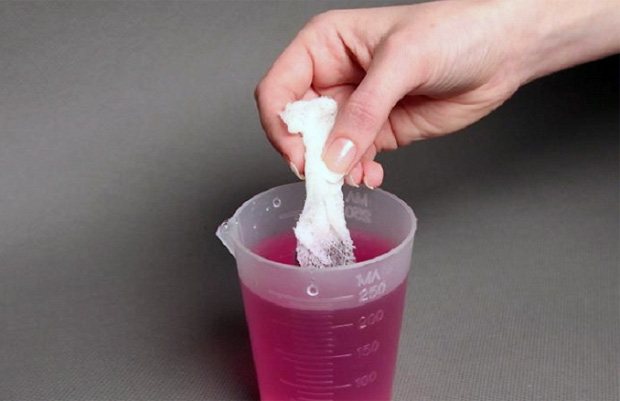

- Sow seeds, sprinkle with earth on top (no more than 1 cm high).
- Drizzle and cover with plastic wrap. Better to put the pots in a warm place. Remember that the temperature must be at least + 20 ° C.
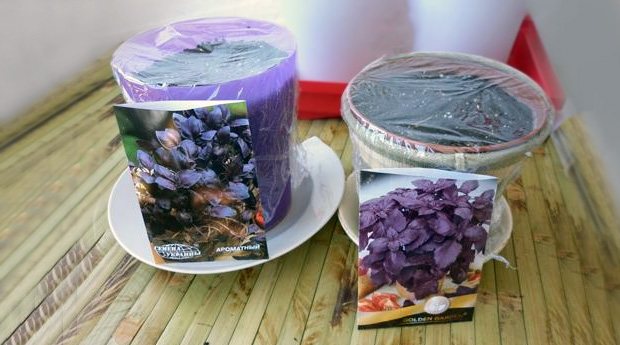

The sprouts will germinate in about 7-14 days. As soon as you see thin stalks, the film must be removed. Water the seedlings only with warm water and very carefully. If there is little light, use additional phytolamp lighting. The seedling method helps to get the harvest much faster and earlier.

Advice! As soon as the seeds sprout, lower the air temperature to + 16-20 ° С. Otherwise, the sprouts are strongly stretched. How it looks externally - everyone knows very well: the stalk becomes thin and light green.
Growing basil from seeds
Basil seeds can be purchased at specialized stores. This is the most suitable option when planning the cultivation of several bushes of a plant. If basil grew in your summer cottage, which suited you in all respects, then it is quite possible to collect its seeds yourself. It should be borne in mind that only those plants that you planted through seedlings will give full and high-quality seeds: with direct planting in the ground in a temperate climatic zone, the seeds of this spice do not have time to ripen. Seeds are harvested in dry weather when the bracts dry and darken:
- The dried peduncle is cut from the plant and placed in a darkened, well-ventilated room for ripening.
- After drying, the seeds spill out of the boxes themselves. They must be cleaned of debris and additionally dried.
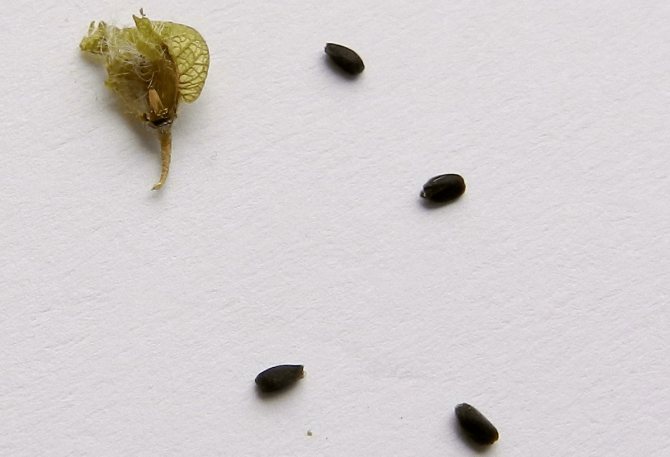

Ripe basil seeds should be black
Basil seeds germinate for 4–5 years.
Preparation of planting material
Basil came to us from countries with hot climates, so its seeds will be active only if there is enough heat and light. When planting with unprepared seeds, you will have to wait a very long time for shoots, so it is recommended to warm up the planting material. This is best done in the sun or radiators. It is important that the seeds are warmed up to a temperature of +40 degrees. Accelerates germination and seed soaking, during which they are saturated with moisture. Soaking is carried out in warm water corresponding to the heating temperature (+40 degrees). After this procedure, the seeds are slightly dried.
Please note that basil seeds will become slimy when soaked.
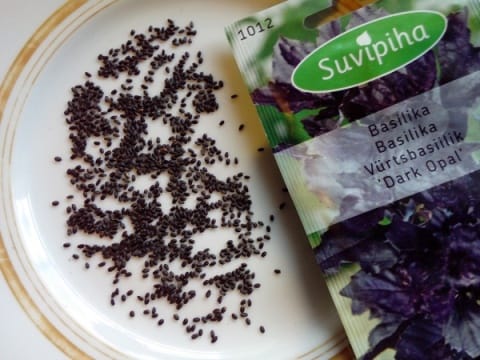

In the water for soaking, you can add drugs that stimulate growth: Zircon, Albit, etc.
Basil shoots from high-quality warmed up and saturated with moisture seeds will appear 7-10 days after planting.
Containers for planting
Before choosing planting containers, you need to decide in what way you will grow basil - with or without a pick. If you plan to transplant seedlings, then the initial container can be shallow plastic cups, ordinary cassettes or seedling trays. When growing without picking, they immediately choose high and spacious containers, for example, liter pots, in which the roots of the plant will feel free and comfortable. Since the grown greens are most often located on the kitchen windowsill, it is useful to think about how the planting containers will fit into the interior, whether there will be enough space for a convenient location of all the pots.
Variants of the subsequent placement of pots with seedlings in hanging pots and on hanging shelves located in the window opening are quite acceptable. They will become a bright decoration of the interior, will solve the often arising problem of lack of space.
Photo gallery: ideas for planting basil and other herbs in the kitchen
Buckets with plants will look beautiful on rails or hooks in the window opening Greens can be planted in ordinary glass jars of the appropriate volume


Well-chosen planting containers can create additional comfort in your kitchen Greens can be grown in containers made of ceramics, plastic or metal Hanging containers and pots will save space on the windowsill When placing shelves, it is necessary to take into account that plants need a lot of natural light
Basil planting soil
One of the conditions for the successful cultivation of basil is a light, fertile soil with good moisture and air permeability. A suitable soil can be formed by mixing the following ingredients:
Recent Entries
5 of my favorite tomato varieties that are great for pickling 7 super early and delicious potatoes to plant in 2020 6 rare 2020 tomato varieties that will bring you a decent harvest
- humus + coconut fiber in a 1: 2 ratio;
- fertile soil + compost in equal parts;
- humus (1 part) + peat (2 parts).
In order to protect future seedlings from pests and diseases, it is recommended to warm up the soil. This can be done on a baking sheet in the oven. The soil is calcined at a temperature of + 100-120 degrees for an hour. To increase the nutritional value, the prepared mixture should be spilled with a solution of mineral fertilizers: urea, potassium sulfate and superphosphate are taken for 1 liter of water (1/8 teaspoon of each ingredient).


The sowing container is filled with the prepared mixture, slightly compacted and watered
Before filling the containers, a two-centimeter drainage layer of expanded clay, pebbles, foam or broken brick is laid on the bottom. Prepared soil is poured over it, not reaching 3-4 cm to the edges, and watered abundantly.
Sowing seeds
After the seeds and planting container are prepared, you can start sowing. It is completely standard, but when it is carried out, the following features must be taken into account:
- seeds are laid out on damp ground, and then sprinkled with a centimeter layer of soil. With a deeper sowing, the plants will germinate for a long time, and a shallow planting will increase the likelihood of leaching and possible death of seeds;
- 3-4 plants will feel comfortable in a flower pot.When growing without picking, you can sow a little more seeds, subsequently removing weaker shoots;
- when sowing in trays, the seeds are placed at a distance of 2-3 cm;
- after sowing the seeds, the containers are covered with polyethylene, glass or a plastic cap, which is removed only after germination;
- until the first shoots appear, the pots can be kept in any warm room without worrying about the light. The light at this stage is not important to the seeds;
- watering is carried out only as the top layer of the soil dries up;
- after the emergence of seedlings, the covering material is removed, the container is transferred to a well-lit place, if necessary, the shoots are thinned out.
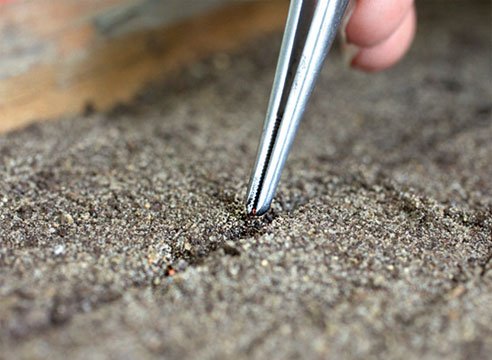

It is convenient to spread small basil seeds on the soil surface with tweezers
If the seeds were planted immediately in a spacious pot, then after the sprouts reach a five-centimeter height, soil is poured into the container, which will strengthen the young growth.
Picking
Sprouts that have sprouted in a small seed container will need a pick. It is carried out in the phase of 1–2 pairs of true leaves. The transplanting soil can be used the same as for sowing seeds. The seedlings are dug out carefully, without shaking off the soil from the roots, and immediately placed in small holes in the main container.
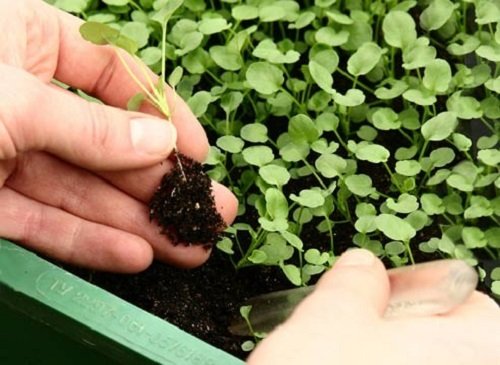

Seedlings are taken out of the common container using a plastic knife or other device, taking care not to damage the roots
An important condition! Since basil seedlings do not form adventitious roots on the stem, they are dived without deepening, that is, the planting depth should be the same as that of the seedlings.
After picking, the seedlings must be watered, if necessary, level the lopsided plants. Basil seedlings will need about a week to adapt to new conditions and start growing again.
Basil care
Plant pots should be in a well-lit area. From March to August, natural light is enough for him, and in late autumn and winter, growing basil will need additional lighting. In order for all the leaves to receive a sufficient amount of light, it is recommended to periodically rotate them on the windowsill. Potted soil should be kept moderately moist. Basil can be watered and sprayed daily in summer; in winter, watering is carried out twice a week. More frequent watering can lead to waterlogging of the soil and root rot.
Watering is carried out with water at room temperature, and after the procedure, the soil must be loosened shallowly to ensure the flow of oxygen required by the roots of the plant.
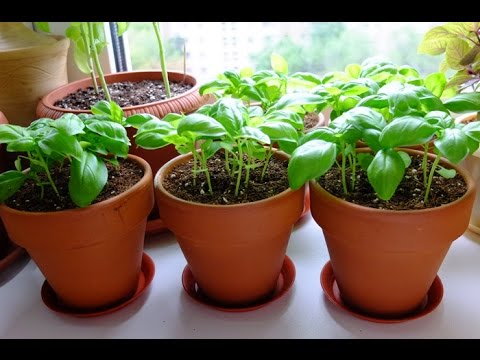

In order for the basil to grow, bush and branch, on your windowsill the air temperature should be at least 20 ° C (or even better, 25 ° C), and the sun should shine for at least 3-4 hours a day.
The air temperature in the room where the aromatic seasoning grows should be quite high - not lower than +20 degrees. Drafts negatively affect the plant. If strong blowing is felt on the windowsill, then the plant should be protected by wrapping the pots in a transparent plastic wrap. For homemade basil to delight you with its aroma and herbs for a long time, it must be fertilized. Analyzing the experience of indoor plant cultivation, you can advise organic fertilizing with vermicompost or Agrolife (according to the instructions). The number of dressings should not exceed 2 per month.
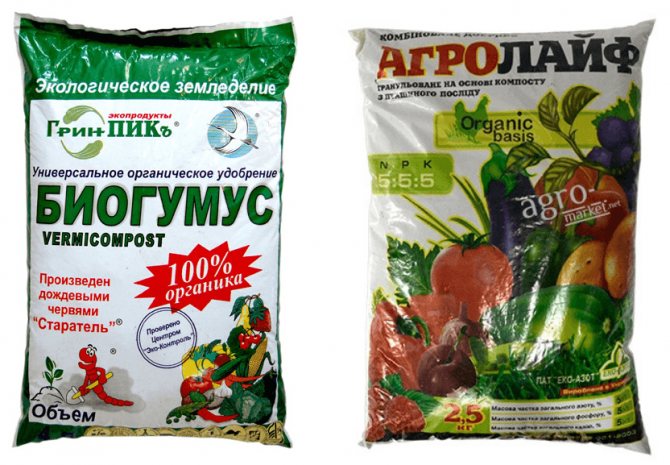

Organic fertilizers contribute to the saturation of crops with nutrients, which are presented in a balanced ratio
If you decide to use mineral fertilizers, then pay attention to the fact that you should opt for specialized mixtures for basil, and do not use formulations intended for other crops.
Video: harvest on the windowsill - we grow basil from seeds
Basil pick
As soon as the first true leaves appear on the plants, you need to correctly dive. Stick to the following algorithm:
- prepare the container. It is advisable to choose a separate one - pots, cassettes. Make a small indentation (about 1-1.5 cm). Gently pour water from a teapot or ladle into the depression;
- sprinkle the sprout trays with water. Do not overfill. Wait about 10 minutes;
- now carefully using a spatula, a small scoop, dig in the sprout, pull it out and insert it into the hole.
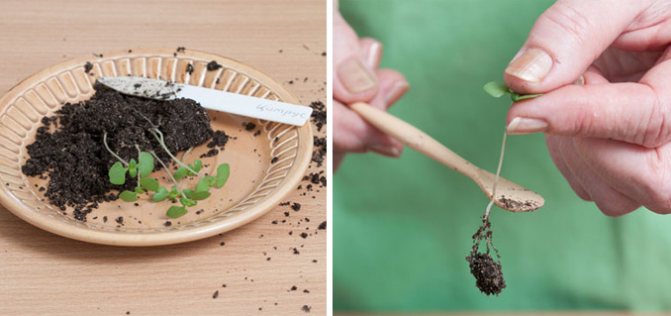

Sprinkle earth into the hole so that the sprout holds; - water the seedlings with water;
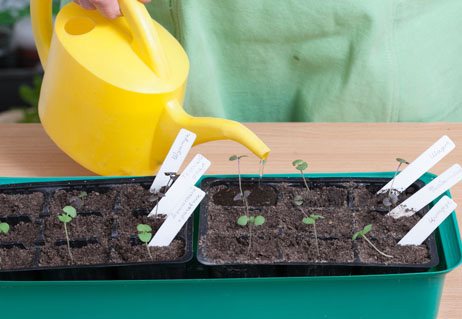

- remove for two days in a cool, dark place.
Advice! It is not necessary to deepen the seedlings when picking, as, for example, it is done with tomatoes.
In the future, caring for the plant is not so difficult. You need to water the seedlings with warm water. After 10 days, it can be fed. The technology for preparing the composition is simple: mix 2 g of ammonium nitrate, 4 g of superphosphate and 4 g of wood ash in 1 liter of water. Mix well. Experienced gardeners advise filling the soil in pots with a mixture of wood ash and sand (1: 1). This will prevent the development of the black leg.
Approximately 10-14 days before the expected planting of the basil in the ground, the seedlings must be hardened. How to do it? Start by taking out the seedlings, for example, to a closed balcony, where the temperature is 5 degrees below room temperature.
After a few days, lower the temperature. For example, open a window on the balcony. Then the seedlings can be left outside overnight. In general, the temperature can be reduced to + 8-10 ° C. It is possible to plant seedlings in open ground only if the air temperature is + 10-15 ° С for a week.
Output
Southern basil can be grown from seeds in almost all regions of our country, except for the Far North. In open ground, it can exist when the soil warms up to + 15⁰, and on the coldest nights the temperature does not drop below + 7⁰. To quickly feast on fragrant leaves, grow a spicy culture through seedlings. Do not overdo it with watering young seedlings so that they do not get sick with a black leg.
When feeding, it is very important that nitrogen is present in the fertilizers. From it the leaves become thicker and fleshy. Only strong, healthy, productive specimens are suitable for collecting seeds. Purple varieties in taste are not inferior to green ones, and can be used as decorative crops for decorating a flower garden. Learn to use the spice correctly in cooking, and your table will become more tasty and healthy.
Choosing a place on the site where to plant basil
Basil loves the sun. There is no need to shade it. Therefore, it is necessary to plant seedlings in the country only on the southern, sunny side of the site, where there is little shade. On average, there should be at least 8 hours of sun per day.
The soil should be light, nutritious and breathable. It is better to prepare the place in advance. Dig it up in the fall, add humus or manure (5 kg per 1 square meter). Make a bed. By the way, basil is very responsive to organics. If you have heavy soil in your area, add peat and sand to it.
Some summer residents advise shedding soil with such a solution before planting seedlings: you need to mix 0.5 teaspoons of potassium sulfate, potassium chloride and urea. All this needs to be diluted with 5 liters of water.
This crop can be grown along any buildings. It looks beautiful in joint plantings in vegetable beds, in mixborders. Violet and green basil planted together will overcame very nicely.
I have an idea! Basil can be planted in large pots and placed along terraces, paths, veranda walls or houses. Just make sure that the sun illuminates them from all sides. True, in July, in the very heat, the pots can be shaded.
Preparing for landing
Basil grows well on light, fertile soil without stagnant water with an acidity of 6.5 to 7.0. When digging in autumn, humus must be added to it - 1 bucket per 1 m2. If the earth is heavy, clayey, then add to it:
- compost or humus - 1 bucket per 1 m2;
- peat, sand - 2.5 buckets per 1 m2;
- lime - 1-2 handfuls per 1 m2.
Basil seeds are small, soaking them complicates planting - the seed sticks together, as a result, the seedlings will be uneven and thickened.
When 20–30 plants are planted, the seeds are soaked in a solution of a growth stimulator - "Epine" to accelerate germination. This amount can be divided piece by piece with a toothpick before planting.
Additionally, see how to grow seedlings:
Dates of planting in open ground
Transplant seedlings into open ground only if a stable above-zero temperature has been established in your region (not lower than + 15 ° C). It will grow well at + 20-25 ° С. In the middle lane and Siberia, such days come only after June 10-15. This plant does not tolerate low temperatures, and especially frosts, it will die immediately.
It is advisable to plant seedlings according to this scheme: plant tall ones 30 cm apart, undersized ones - 40 cm apart. It is advisable to plant on a cool day. If it's hot outside, you need to use shading for the plants. For example, build a hat from a newspaper. Otherwise, burns may appear on the leaves. And the bush itself may not take root and die.
The algorithm for planting into the ground is as follows:
- dig a hole, spill it with water;
- spill the seedlings well;
- carefully with the help of a scoop, remove the bush along with a lump of earth (it is better to grab more land - this way the basil will take root better);
- place the plant in the hole, sprinkle with earth, tamp lightly and water well.
Why does purple basil turn green: reasons, what to do?
Summer residents are often worried about the question: why does purple basil turn green? Such a case is by no means uncommon. Many people think that the seeds were of poor quality. But it happens that purple entrances appear first, and then turn green.
This happens when there is insufficient sunlight. Basil should be under the sun 6-8 hours a day. If it's cloudy outside or basil growing on the windowsill in the shaded side, the leaves and tops of the plant begin to turn green.
You should not get rid of such a plant, everything is in order with it. It is enough to take out the basil to a sunny place, and the leaves will again take on a purple hue. If it is not possible to provide sunlight, it is recommended to install artificial lighting lamps in greenhouses and on window sills.
If basil is growing in the garden and has begun to turn green, wait for sunny days. You will see your basil bushes begin to change color.
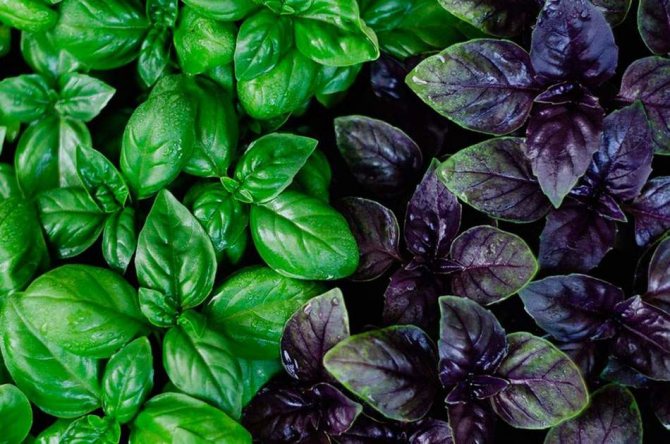

Basil turns green
Seed sowing scheme in open ground
Planting basil in open ground with seeds is also carried out. This is done only if the air temperature has warmed up to + 15 ° C. In no case should return frosts come - your plants will simply all die. Basil grown in a seedless way turns out to be stronger and more bushy, however, you will hardly wait for flowers and seeds. And you won't be collecting greens so soon.
Choose a bright area that will not have strong drafts. The land must be properly prepared a few days before planting the seeds. Do everything step by step.
- Step 1. Dig up and fertilize. But it is better to do it in advance - in the fall.
- Step 2. Close the bed with a film or other covering material so that the earth warms up well.
- Step 3. Spill the bed with warm water. Let stand for a while so that the water is well absorbed.
- Step 4. Make grooves, there is only one requirement for them: they should be no more than 1.5 cm deep.
Planting scheme: the distance between the rows is 20 cm, between the grains - 10 cm. However, if you did not germinate the seeds beforehand, sow more of them. Better then thin out. Remember that you do not need to soak the seeds in this case.
- Step 5. Sprinkle soil over the seeds. Water well and cover with covering material. It must be removed as soon as the first shoots appear.
I have an idea! This culture grows rather poorly.The thing is that its seeds are covered with essential oil. And moisture penetrates into the seed with great difficulty. To speed up germination, you can use the following advice.
You need to put the seeds in a cloth bag. Then pour the seeds three times with warm water (not higher than + 35 ° С) for 20 minutes. Then put on paper and let dry a little. Now you can sow. Only in this case, the basil rises quickly.
Why is purple basil in color: reasons, what to do?
Important: Basil flowering is a natural process. Flowering occurs 2-3 months after planting the seeds.
A tassel with white, pink or white-purple flowers appears at the top of the stem. The flowering of the basil coincides with the harvest. If you are growing basil for human consumption, cut off the flowers.
You need to cut off the brushes of the inflorescences together with the two lower leaves. If the flowers are not cut, the leaves will become tough. Blooming also affects the taste of the basil. During the flowering period, a large amount of essential oils accumulates in the leaves of the basil, which makes the leaves the most fragrant.
You can not cut the inflorescences in such cases:
- If you want to collect seeds for planting next year.
- If you are growing basil as an ornamental plant.
Basil flowers are used medicinally. On their basis, tinctures, decoctions are made for the healing of small cuts, wounds, for the treatment of problem skin.
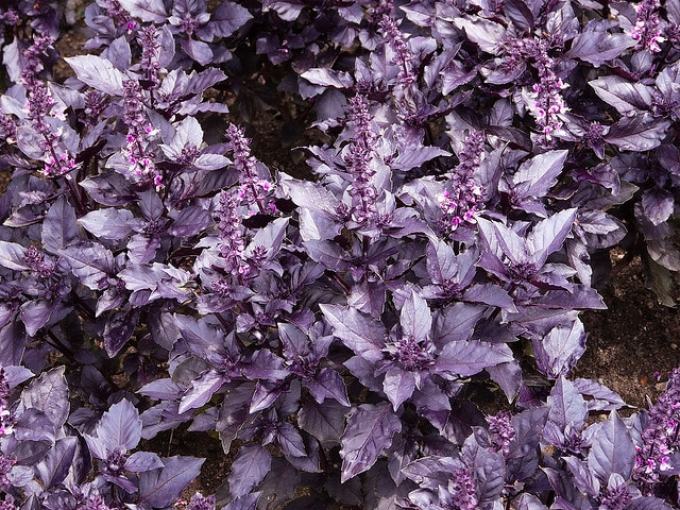

Flowering basil
Neighborhood with other plants
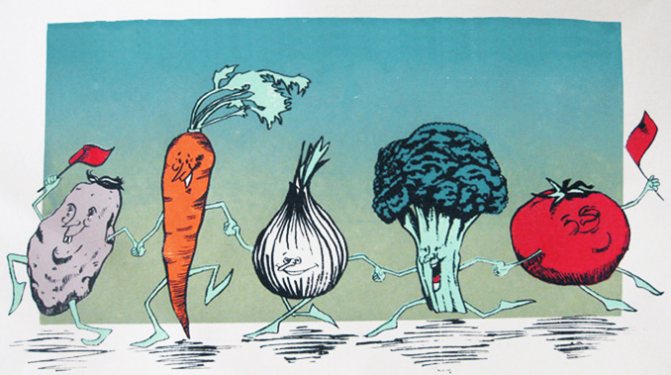

Basil is not such a capricious plant as, for example, fennel. It's very friendly.
Next to what to plant basil in the garden? The first one he is friends with is a tomato. The thing is that these two plants need the same growing conditions, and the agricultural techniques are very similar. Growing it together with tomatoes will save the latter from voracious caterpillars - tomato lovers. Some gardeners even believe that basil enhances the taste of tomatoes.
Also, this culture can be planted next to peppers and any legumes. The latter will well enrich the earth with nitrogen, from which the basil will grow especially lush. Zucchini, pumpkins and eggplants will not be upset from such a neighborhood.
You can plant basil next to lettuce or cabbage lettuce. Purple varieties will look especially beautiful in these plantings. Onions, cucumbers and kohlrabi are other great neighbors for this plant. Dill, marjoram and white cabbage cannot coexist with basil. They will grow poorly together, and you are unlikely to see a good harvest.
Varieties to choose from
Among the whole variety of varieties, there are several proven ones that are guaranteed to delight you with their taste.
Basil Yerevan - has leaves of a rich bluish color, has a persistent pleasant aroma of tea and allspice.
Basil Spoon-shaped - it has already light green leaves and an aroma that resembles both cloves and bay leaves.
Basil Baku - the color of the leaves is purple-brown, and the aroma has a mixture of mint and clove odors.
Fragrant Basil - aka Camphor - is widespread in the beds of the whole world and is well known to every spice lover. It reaches a height of 50 cm and has a pronounced clove aroma.
Basil Magical Michael - Known for its good tillering ability.
Basil Mammoth - grows large leaves and has a fairly pungent taste.
Cinnamon basil - aka Mexican - already from the name it is clear that it has a cinnamon flavor. It grows up to half a meter in height and blooms with purple flowers.
Basil purple - got its name from the red-purple color of the leaves. Its leaves are large, fleshy and delicate in taste. It enjoys well-deserved popularity in the Caucasus, where it is called "regan".
Lemon basil - and this name is quite eloquent - the aroma and taste of its leaves are lemon.Add to this its incredibly lush leaf mass - up to 250g of greens can be harvested from one bush.
Photo gallery of basil varieties
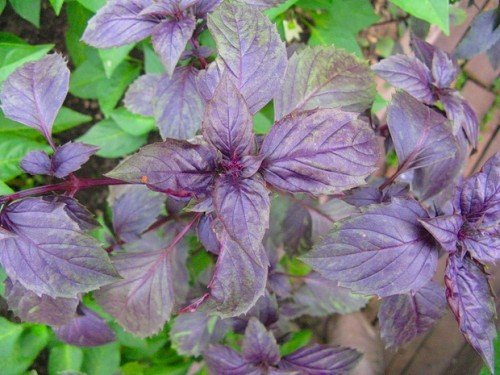

Basil Yerevan
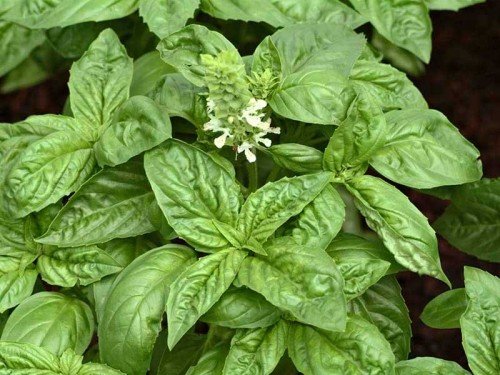

Sweet Basil or Camphor
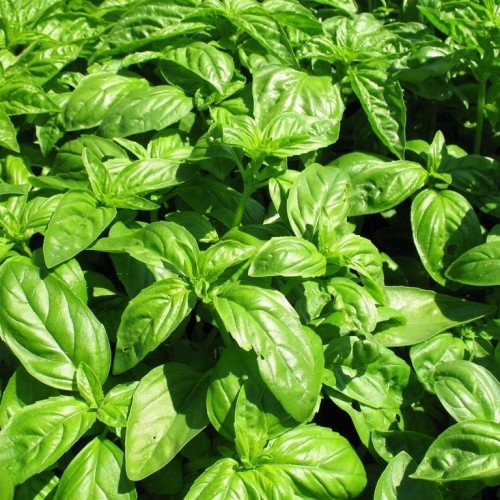

Basil Magical Michael


Basil Mammoth
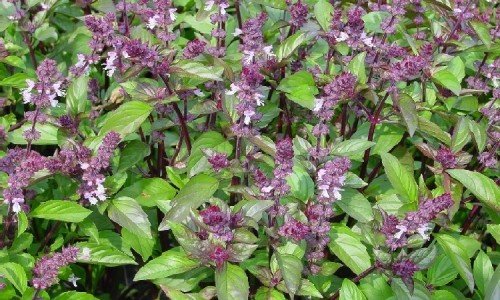

Basil Cinnamon
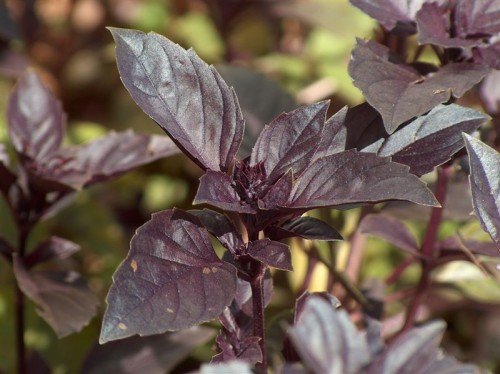

Basalik Violet aka Regan
Growing basil is a rewarding activity, because as a result you get an excellent seasoning that makes the taste of many dishes much richer. There is a wide variety of varieties to choose from, from which you can choose the one that suits your taste and aroma.
How to care for basil: feeding, watering, pinching
Growing and caring for basil in the open field will not bother summer residents at all.
Topping
Remember that this procedure is mandatory. Your bushes will be very lush! They will immediately begin to form new cuttings. Otherwise, you will end up with a thin stem with several branches and leaves.
The first time the plant needs to be pinched in the spring (in most of Russia in May). 5-6 true leaves should already appear on the bush. Just pinch off the top of the bush. Then this procedure must be carried out regularly - break off the tops of the shoots with the upper leaves all summer.
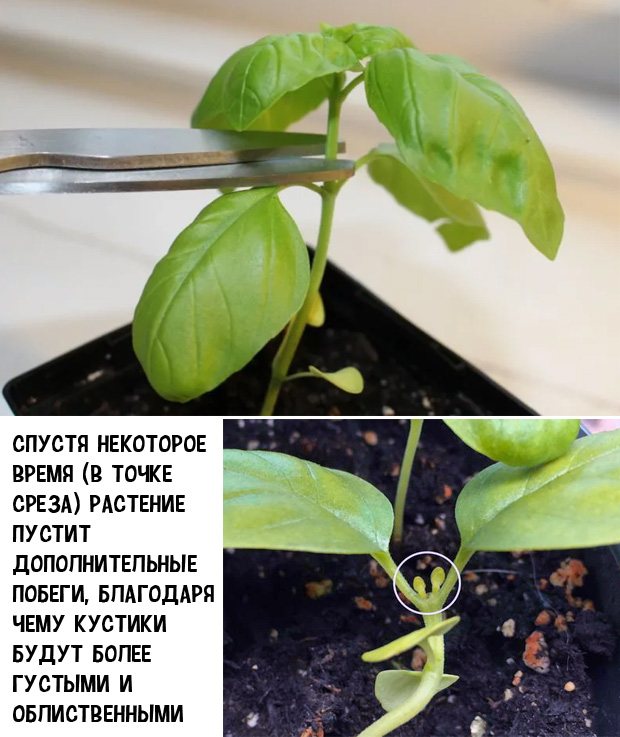

Guide yourself how often you need to do it. Approximately - once every 7-10 days. Be aware that this procedure is completely painless, it only stimulates the further growth of shoots.
If your goal is not to grow seeds, then the inflorescences that appear must also be torn off or broken out.
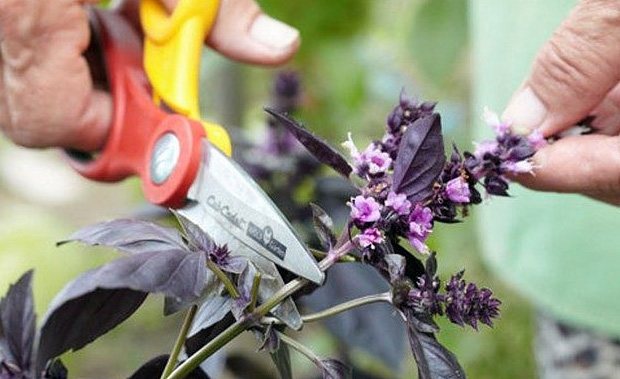

Advice! In the budding phase, the leaves are the most fragrant. It is at this time that they are recommended to be plucked for drying for future use. Read more about how to prepare basil in our article >>
Top dressing
This culture is very responsive to feeding. Therefore, it needs to be fertilized at different stages.
- If you introduced organic matter into the ground before planting the plant, you do not need to fertilize the basil for the first 10-12 days. Only when sowing seeds in open ground can the grooves be shed a little with a growth stimulator. This is the best way to accelerate growth. You don't need to use anything else.
- As soon as a plant that grows in a greenhouse or greenhouse has 2 real leaves, it needs to be fed with complex fertilizer. Take 3 g of potash, 2 g of nitrogen and 5 g of phosphorus fertilizer. Stir, dilute in 1 liter of water. And water your bushes. They will grow lush!
- Feed the plants 2 weeks after planting in the ground with some kind of complex fertilizer. Only do this if you did not feed it at the seedling stage.
- In the future, fertilize the culture once a month, best of all with nitrogen fertilizers. They contribute to the growth of lush and delicate greenery. The plant will thank you for the use of manure (1:10) and chicken droppings (1:10). However, it is often not necessary to water the bushes with them.
Advice! Make sure that weeds do not germinate in the garden. Remove them in time.
Harvesting
When the plant reaches a height of 10-12cm, it can be slowly harvested. The collected bushes are dried and finely rubbed, resulting in an excellent seasoning.
Basil is harvested by leaf, carefully so as not to damage the main part of the plant. Cut leaves and upper rosettes are placed in a shade with constant air circulation - usually various canopies are used for this. The tops of the shoots are tied in bunches and hung to dry from the ceiling.
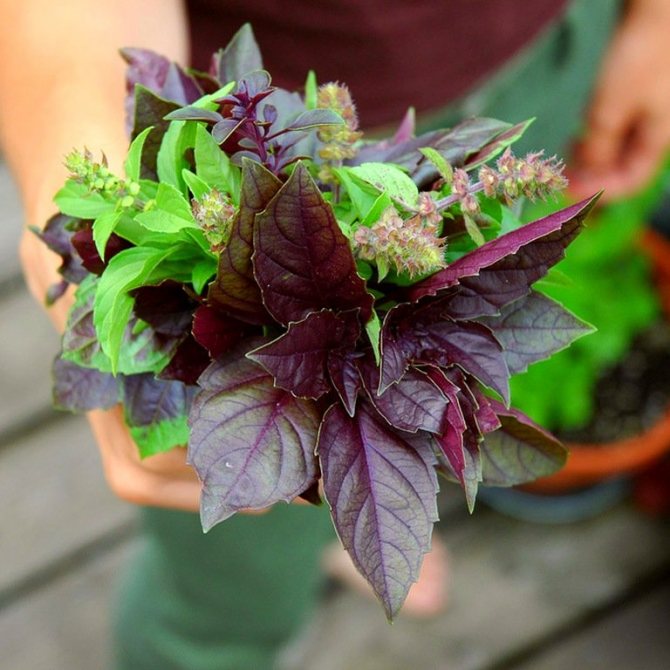

Assembled top basil rosettes are bundled and hung to dry under a canopy
Summer residents advice
- To grow basil in the northern regions, gardeners of these places do not advise sowing it in open ground - only through seedlings. Even pre-germinating the seeds will not help. Better yet, buy this plant in the market (or in a store) along with a root and plant it in a greenhouse or greenhouse.
- Experienced summer residents know how to deal with the most common disease of basil seedlings - black leg. Here's what they advise.In no case do you need to flood the plants, and also plant them densely. And it is good to sprinkle the earth with dry sawdust - they will absorb excess moisture. If the attack has overpowered your bushes, try treating them with a solution of copper sulfate.
- Gardeners are very fond of planting this culture in a greenhouse. And share their growing secrets. After all, there she is not afraid of any frost. Seedlings are planted in May. Water in moderation. And be sure to ventilate. If you plan to transplant the greenhouse sprouts later into open ground, they must be prepared: in about a week, you should not water the bushes and keep the greenhouse open all the time.
General information
Basil belongs to the Lamiaceae family. This is a 1-year-old herbaceous low plant (0.5-0.7 m), with a straight branching stem, its leaves, depending on the species and variety, can be green or purple, as well as white or pink. They smell good because they contain essential oils. They also contain other useful substances - proteins, vitamins, tannins, minerals, saponins, glycosides, sugars, camphor.
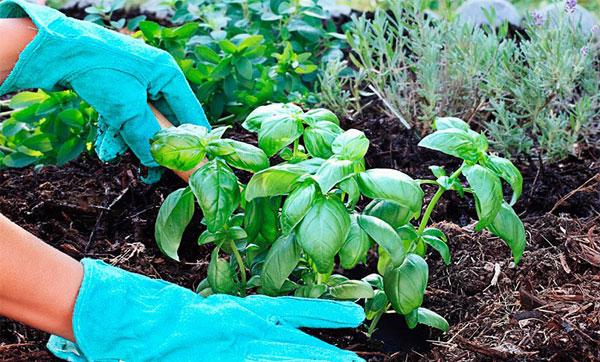

Leaves, fresh or dried, are used as a seasoning for dishes, put in cold snacks to add flavor to them, in vegetable salads and canned food, pickles, in the preparation of sausages and preservation. This plant is grown mainly in open beds. But cultivation of basil in greenhouses is also practiced.
Frequently asked questions
Why doesn't basil spring up?
There may be several reasons for this:
Reason 1... Bad substandard seeds. Before planting, be sure to check the seeds for germination: sow a few things in the ground and wait for the shoots, or soak in a wet cloth and wait for the shoots.
Reason 2... It's cold in your apartment (or garden). Or the drawers are on a cold windowsill. That is, the earth is not warmed up enough. Planting seeds should only be carried out in warm ground!
Reason 3... Perhaps the seeds will still sprout, they just sprout for a long time, as they are covered with essential oil.
Reason 4... You have sown them very deeply. And if, moreover, your soil is heavy or it rained heavily, then a crust formed, and the plants simply could not break through it.
Why is it growing poorly?
Most likely, you are not following agricultural practices. Perhaps he is cold or dark. Or you rarely water it. It may be that you planted the plant in a draft - and he categorically does not like this.
Maybe you have acidic soil - it needs to be calcified. He does not like heavy clay soils, as well as excessively flooded with water.
Or perhaps it lacks nutrients - the soil is very poor. In this case, carry out feeding.
Is it possible to bury basil seedlings?
Experts advise against doing this. Basil is not a tomato; it does not like grooves until the first leaves. It is advisable to deepen it quite a bit when unpacking.
Then plant basil, the best predecessors?
In general, basil is a very friendly plant and has good compatibility. You can plant it after any culture. But it’s better if you choose an area after legumes, cucumbers and potatoes. Just remember that you cannot grow this plant in one place every year.
IMPORTANT! * when copying article materials, be sure to indicate an active link to the source:
If you liked the article - like it and leave your comment below. Your opinion is important to us!
What kind of soil is needed for purple basil?
Basil requires a suitable soil. You should not expect a good harvest of basil on wet, heavy clay, loamy soils. The soil must be loose.
It is recommended to dig up the soil before planting the basil, and also in the fall. The following fertilizers must be applied to 1m2 of soil:
- Humus - from 3 to 5 kg;
- Superphosphate - 25 g;
- Potassium salt - 15 gr.
If you plan to grow a plant on clay soils, you must first carefully kill the soil with a hoe, hoe. But, as practice shows, basil often gets sick on such soils, weak grows.
Choose a location for the basil that is sunny so that the sun will warm the plant throughout the day. Drafts should also be avoided.
The soil from the garden needs to be disinfected before planting seeds in pots. To do this, the soil is first sieved and then steamed in a water bath for 1 hour. This will protect the seeds from fungal diseases. The soil purchased in the store undergoes the necessary processing.
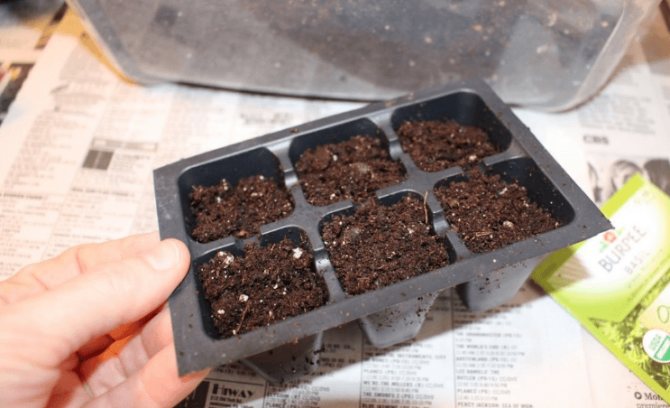

Basil soil
What container to plant
For growing basil on a windowsill, any pots will do. But it is better if they are square or rectangular (it is convenient to place them on the windowsill) and always with holes in the bottom. They keep the right amount of moisture well, protect the root system from damage and can be used for more than one season in a row.
Peat pots work very well. There is no need to take out the seedlings for transplanting, and the peat itself, gradually rotting, turns into a nutritious fertilizer. The disadvantages include: rapid deoxidation from water, the risk of mold.


